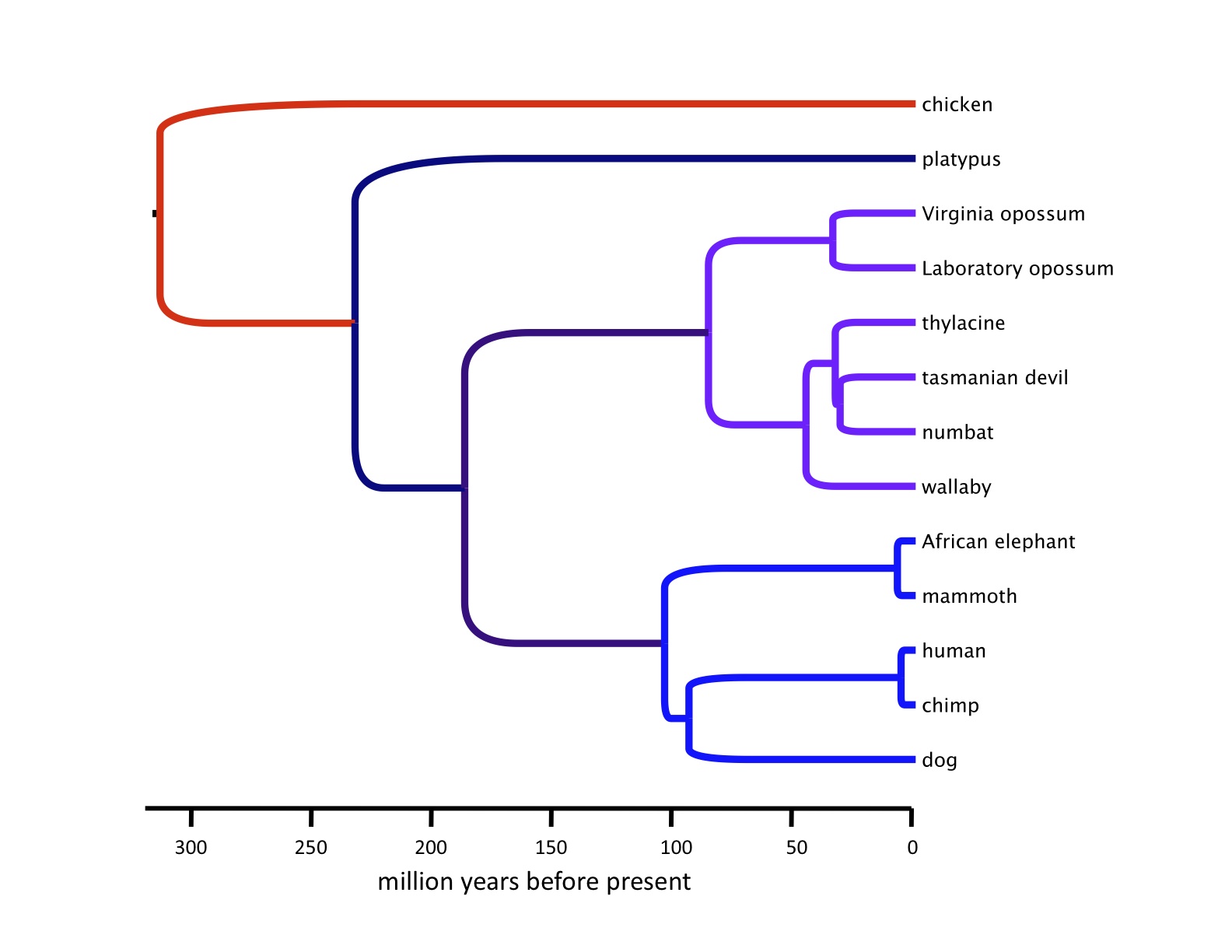
There has been an ongoing debate concerning the precise position of the Tasmanian tiger within the marsupial family tree. Early studies of bones and other morphological traits grouped the thylacine with South American carnivorous marsupials. Later morphological studies placed it among Australian marsupials, possibly near the family Dasyuridae, a group that includes the Tasmanian devil and quolls. The 1990s saw the advent of the polymerase chain reaction and special methods for recovering DNA from museum specimens. These early molecular studies obtained only very short fragments of the thylacine's mitochondrial DNA from museum specimens, but confirmed a close relationship near the devil and its relatives, and a slightly more distant relationship to the numbat (family Myrmecobidae).
We have determined two thylacine mitochondrial genomes, in addition to a modest fraction of the thylacine's nuclear genome. These considerably longer DNA sequences now firmly place the thylacine in the mammalian family tree, not as a close relative of the Tasmanian devil, but separated by nearly 40 million years from the devil and the numbat, as indicated in the following diagram. We anticipate that these advances in "museomics" will inspire additional cataloging of extinct biodiversity, as well as an improved understanding of the causes of species extinction.
